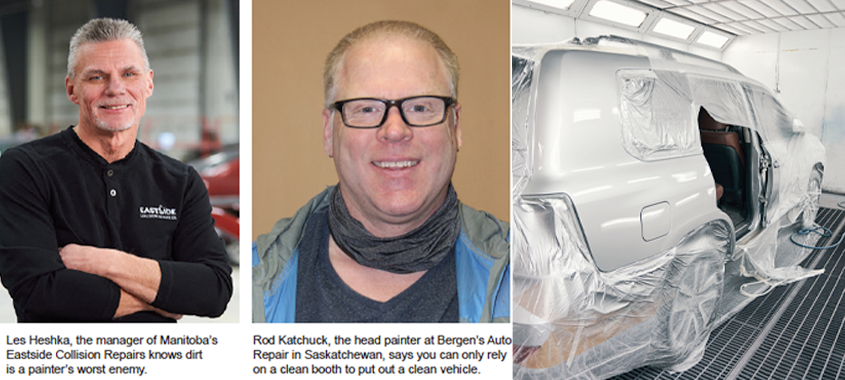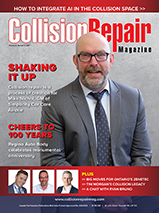HOW CLEAN IS YOUR PAINT BOOTH?
WHEN WAS THE LAST TIME YOU DID A DEEP-CLEAN?
By Bianca Mazziotti
Paint booths are an essential part of any collision repair shop—but what does it take to deliver exceptional service every time?
Rod Katchuck, the head painter at Bergen’s Auto Repair in Saskatchewan, says you can only rely on a clean booth to put out a clean vehicle.
“I do a full clean once a month,” said Katchuck, who knows that even though it is time-consuming, it is worth cleaning their downdraft paint booth regularly. “Between removing the filters, washing the walls, reboot coating, and replacing all the filters, you’re looking at about three hours.”
The importance of cleaning goes beyond the vehicle, as paint booths that haven’t been cleaned regularly can become a safety risk.
“You want to keep a log on it as well— Fire Marshals can ask for that. If the exhaust isn’t clean it can become a fire hazard,” said Katchuck.
At Eastside Collision Repairs in Manitoba the bodyshop holds two paint booths: one is a JBI downdraft that is 60 feet long, and the other is a GFS downdraft. Les Heshka, general manager at Eastside, says that they also highly prioritize cleaning when it comes to their paint booths. “I guess you could say they are cleaned daily, but it depends on what kind of cleaning you’re talking about,” said Heshka. “Filter changes go anywhere from three months to a year. For the downdraft filters, the floor filters are changed out weekly.” Of course, Heshka says dirt is a painter’s worst enemy, so his business ensures regular shop maintenance themselves and once a year they have a company come in and do a thorough cleaning of their paint booths.
Rob Armstrong, the operations manager of Trinity Collision Centre in Moncton, New Brunswick, says the floor filters get cleaned every 14 days when it comes to their two Garmat paint booths. The shop schedules the cleanings during down production times, which is typically a Monday morning.
“Most of the vehicles that would require paintwork to be done are usually completed by Friday,” said Armstrong. “Then on Monday, it’s a little bit of a quiet time during startup. So, it makes it an easy transition as the vehicles are getting repaired and sent over to the refinish department.” Armstrong says cleaning the paint booths is more of a tedious job than it is a highly skilled job.
“It’s not something that is glamorous, but it needs to be done,” said Armstrong. “And the staff knows that because it directly affects the kind of quality that we produce at the end of the day.”





















